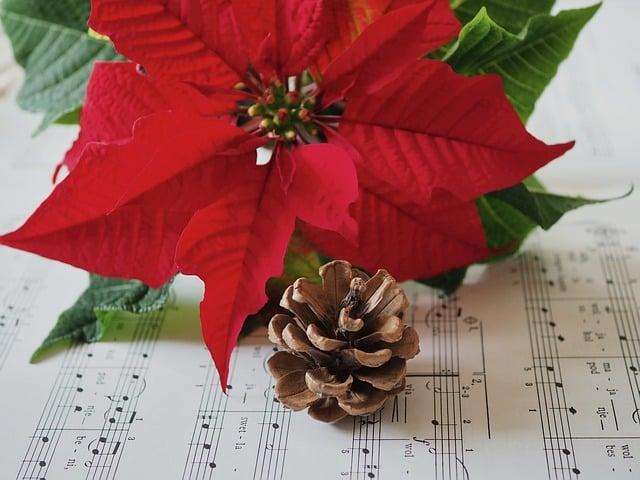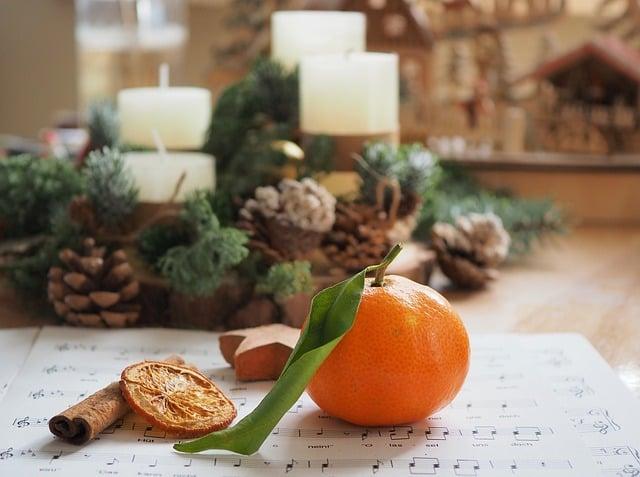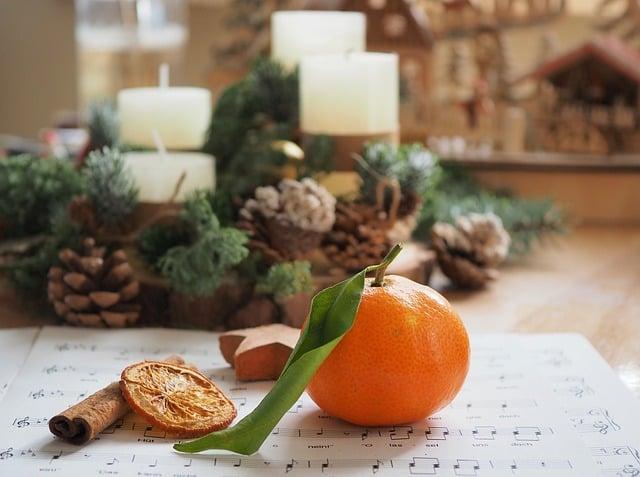In a small village, as winter’s chill settled in, the townsfolk gathered around a flickering candle. Each flame represented a week of Advent, a time of waiting and hope. Young Clara, curious and bright-eyed, asked her grandmother, “Why do we light these candles?” Her grandmother smiled, “Each light reminds us of the promise of joy and peace. Advent is our journey, a time to prepare our hearts for the miracle of Christmas.” As the candles burned, the village felt a warmth that transcended the cold, uniting them in anticipation of love’s arrival.
Table of Contents
- Understanding the Historical Significance of Advent
- Exploring the Spiritual Themes of Anticipation and Hope
- Practical Ways to Observe Advent in Daily Life
- Connecting Advent Traditions to Modern Celebrations
- Q&A

Understanding the Historical Significance of Advent
The season of Advent, observed in many Christian traditions, carries profound historical significance that transcends mere anticipation of Christmas. Originating in the early centuries of the Church, it was initially a time of preparation for baptism, particularly for new converts. Over the years, this period evolved into a broader observance, symbolizing a time of reflection and spiritual readiness. The four weeks leading up to Christmas serve as a reminder of the dual nature of Advent: it is both a celebration of Christ’s first coming and a hopeful anticipation of His second coming. This duality invites believers to engage in a deeper understanding of their faith and the world around them.
Throughout history, various customs and traditions have emerged to enrich the Advent experience. These include:
- Advent Wreath: A circular arrangement of greenery with four candles, each representing a week of Advent, symbolizing the light of Christ entering the world.
- Advent Calendars: A creative way to count down the days to Christmas, often featuring daily scripture readings or small gifts that encourage reflection.
- Liturgical Practices: Many churches incorporate special services, prayers, and hymns that focus on themes of hope, peace, joy, and love.
These traditions not only enhance the spiritual journey but also foster a sense of community and shared anticipation among congregants. As believers engage with these practices, they are reminded of the historical roots of their faith and the ongoing relevance of Advent in their spiritual lives.

Exploring the Spiritual Themes of Anticipation and Hope
As the season of Advent unfolds, it invites us to delve into the profound spiritual themes of anticipation and hope. This period, rich with symbolism and tradition, serves as a reminder of the sacred journey towards the celebration of the birth of Christ. It encourages believers to reflect on the **longing for divine presence** and the **promise of redemption**. The act of waiting becomes a spiritual exercise, allowing individuals to cultivate a deeper connection with their faith and to embrace the transformative power of hope. Each candle lit during this season signifies not just the passage of time, but also the illumination of the heart, guiding us through the darkness of uncertainty.
In this sacred time, the themes of anticipation and hope resonate deeply within the human experience. They remind us that waiting is not merely a passive state but an active engagement with our desires and dreams. As we prepare for the celebration of Christmas, we are called to reflect on the **joy of expectation** and the **assurance of future blessings**. This season encourages us to nurture a spirit of hope, fostering a sense of community and shared faith. Through prayer, reflection, and acts of kindness, we embody the very essence of Advent, transforming our anticipation into a powerful force that can uplift ourselves and those around us.

Practical Ways to Observe Advent in Daily Life
Embracing the spirit of Advent can transform the hustle and bustle of the holiday season into a time of reflection and anticipation. One practical way to incorporate this season into daily life is by creating a dedicated space for prayer and contemplation. Consider setting up a small Advent altar in your home, adorned with candles, a wreath, and meaningful symbols that resonate with you. Each week, light a candle and take a moment to meditate on its significance, allowing the flickering flame to remind you of hope, peace, joy, and love. This simple ritual can serve as a grounding practice amidst the chaos of holiday preparations.
Another enriching approach is to engage in acts of kindness and service throughout the Advent season. This could involve volunteering at local shelters, donating to food drives, or simply reaching out to friends and family who may need support. **Creating a daily gratitude journal** can also enhance your Advent experience; jot down moments of joy or blessings you encounter each day. Additionally, consider incorporating **Advent-themed readings or devotionals** into your routine, allowing you to explore the deeper meanings of the season. By weaving these practices into your daily life, you can cultivate a sense of connection and purpose that resonates far beyond the holiday season.

Connecting Advent Traditions to Modern Celebrations
As the season of Advent approaches, many families find themselves reflecting on the rich tapestry of traditions that have woven their way through centuries of celebration. From the lighting of candles on the Advent wreath to the daily opening of doors on an Advent calendar, these practices serve as a bridge connecting the past with the present. Each candle represents a week of anticipation, symbolizing hope, peace, joy, and love, while the calendar offers a daily reminder of the countdown to Christmas, transforming the waiting period into a time of joyful expectation. These traditions not only enrich the spiritual experience but also foster a sense of togetherness among family members.
In modern celebrations, the essence of Advent can be seen in various forms, adapting to contemporary lifestyles while retaining its core significance. Many people now incorporate **community service** into their Advent observances, emphasizing the spirit of giving and compassion. Others may choose to engage in **mindfulness practices**, reflecting on the themes of the season through meditation or journaling. Additionally, festive gatherings and themed events have emerged, where friends and families come together to share stories, meals, and laughter, creating new memories while honoring the age-old customs. This blend of tradition and modernity not only keeps the spirit of Advent alive but also allows it to evolve, making it relevant for each new generation.
Q&A
-
What is the purpose of Advent?
Advent serves as a season of preparation and anticipation for the celebration of Christmas. It invites individuals to reflect on the significance of Christ’s birth and to cultivate a spirit of hope and joy.
-
Why is Advent celebrated for four weeks?
The four weeks of Advent symbolize the four Sundays leading up to Christmas. Each week represents a different theme, often focusing on hope, peace, joy, and love, guiding believers in their spiritual journey.
-
What are common Advent traditions?
Common traditions include:
- Lighting Advent candles on a wreath
- Using Advent calendars to count down to Christmas
- Participating in special church services
- Engaging in acts of charity and kindness
-
How does Advent relate to the themes of waiting and preparation?
Advent emphasizes the importance of waiting with hope and preparing one’s heart for the arrival of Christ. It encourages believers to reflect on their faith and to be spiritually ready for the celebration of Christmas.
As we embrace the season of Advent, we reflect on its deeper meanings—anticipation, hope, and renewal. This sacred time invites us to prepare our hearts, fostering a spirit of joy and connection as we await the light of the coming celebration.

大家好,我是彼得潘,專業的手法身體治療師。我喜歡探索和研究各種主題,並透過與人工智慧的合作分享專業、實用、有趣的文章。我們定期進行人工審核,以確保內容的準確性。如果您發現文章中有任何不準確的地方,請隨時與我們聯繫,我們會及時糾正。您可以透過 [email protected] 與我們聯繫。



